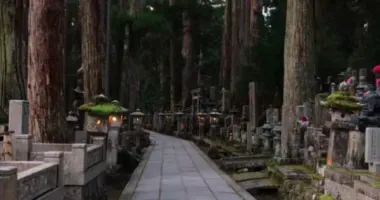Aoba Matsuri 青葉まつり
- Published on : 23/12/2014
- by : R.Z.
- Youtube
An anniversary like no other <br>
How was an inhabitant of a village in Shikoku able to rise up to the level of the great and travel to China? Aoba Matsuri honors the work of this major figure in Japanese Buddhism.
Born on June 15th, SAEKI Mao (774-835), his real name, only ever had eyes for spirituality. He arrived in Nara to study Confucianism among other things, to prepare for a public service career, he began to learn about esoteric Buddhism and abandoned religious studies. Thereafter he based his conception of religion mainly on the experience of the most ascetic meditation.
During these contemplations, he changed his name to Kukai (sky of the sea) as, it is said, he reflected to such a point that he met these two elements. Soon after, he left the archepelago to enrich his learning with Chinese Buddhist thought and returned to the country with the intention of creating a new religious sect, the Shingon sect.
In 816, he obtained permission from the Emperor Saga to use the land of Mount Koya to establish Shingon Buddhism. In addition to his religious accomplishments, Kukai, who posthumously in 921 gained the title of Kobo Daishi ("Grand Master that spread the Buddhist teaching"), title under which he is best known in Japan, has left important marks on Japanese culture, including the creation of the first school that welcomed students from all socio-economic backgrounds and the writing of the first Japanese dictionary ever recorded.
Honoring greatness
Since 1778, the faithful from across the archipelago gather on June 15th to celebrate the teachings of Kukai. At 9 a.m. a memorial ceremony is held at Daishi Kyokai, followed by traditional music. The center of the celebration then shifts to Kongobuji at 11:30 a.m. for a prayer, or to Ichinohashi, the gathering place for the parade that begins at noon and reaches Kongobuji at around 2 p.m.
For this occasion the Hanamido, a small portable altar, with a Kukai child, is carried round all afternoon in the midst of the crowds. Dancing, singing and percussion accompany the parade in an atmosphere that is both respectful and festive. The inhabitants from the homeland of the great sage wear white pilgrim clothes, alongside the city's school children who display their dancing skills. When the cortege reaches the monastery, the principal abbot of Shingon Buddhism of Koyasan welcomes the procession with prayers and good luck wishes. During the morning, many activities are also organized such as a tea ceremony and a calligraphy exhibition, for which Kukai was also gifted. The opportunity for a day's full immersion in the local culture and to understand the admiration for one of the greatest men in Japanese history.















